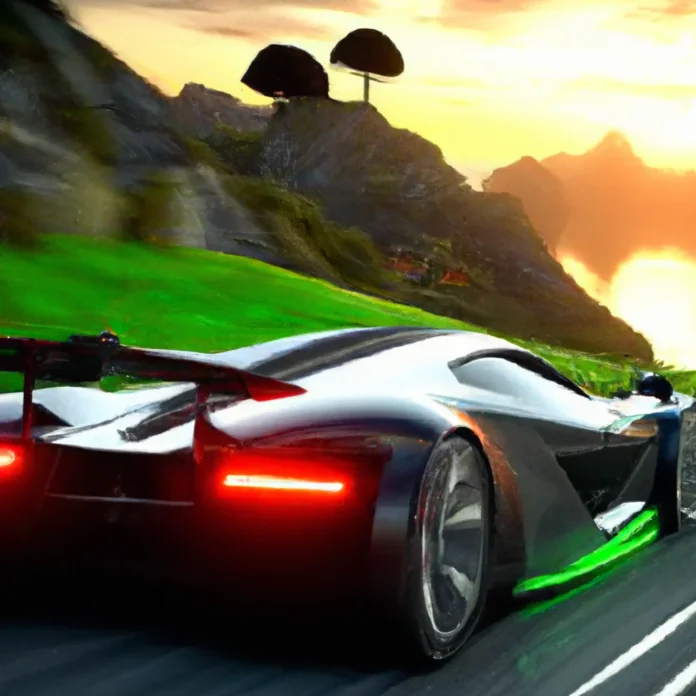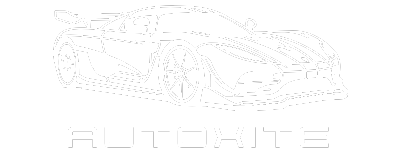Introduction: Why Is ‘The Fastest Car in the World 2025’ Trending Now?
In recent months, the fastest car in the world 2025 has become a headline fixture across automotive news, social media, and enthusiast forums. This surge of interest is not merely about speed; it reflects a moment where technology, luxury, and culture intersect in ways that captivate audiences worldwide. As manufacturers tease new records and push the envelope of performance, curiosity reaches a fever pitch. People want to know which car sits atop the leaderboard, what innovations make it possible, and why 2025 is a watershed year for hypercars.
The conversation extends beyond gearheads. The fastest cars symbolize human ambition, the allure of engineering mastery, and the thrill of what lies just beyond our current limits. We see this fascination reflected in viral videos, influencer posts, and heated discussions about which brand will claim the crown next. In this article, we unpack the reasons behind this trend, exploring the cars, technologies, and cultural forces driving the obsession.
What Defines the Fastest Car in the World?
Defining the fastest car in the world involves more nuance than simply glancing at a speedometer. The title is shaped by a combination of measurable performance metrics, official testing protocols, and the evolving standards of the automotive industry. Let’s examine what truly sets these vehicles apart.
Is It All About Top Speed?
For many, the phrase “fastest car” conjures images of needle-like speedometers and blurred landscapes. Top speed remains the most recognized benchmark. However, it is not the only dimension that matters. While breaking 300 mph is headline-grabbing, real-world performance often includes acceleration, braking, and stability at high velocity.
Performance Metrics: Beyond Speed
Automotive experts evaluate hypercars using a suite of metrics:
- 0-60 mph acceleration times: Showcasing instantaneous power and traction.
- Quarter-mile times: Measuring sustained acceleration and drivetrain efficiency.
- Handling and aerodynamics: Ensuring stability at extreme speeds and versatility on various tracks.
- Braking distances: Highlighting advanced engineering in safety and control.
Each of these benchmarks contributes to a car’s overall performance profile and public perception.
How Are Fastest Cars Officially Measured?
To claim the title, official speed measurements must occur under strict conditions. Manufacturers typically use closed tracks, certified timing equipment, and independent observers. The highest speeds are often determined by averaging two runs in opposite directions to account for wind and gradient.
These rigorous protocols prevent misleading claims and maintain the integrity of the record. For a deeper dive into how these standards are enforced and the controversies that sometimes arise, you can read our analysis on speed record verification.
A Brief History of the World’s Fastest Cars
The quest for the fastest car is as old as the automobile itself. Over the decades, each new record has marked a leap in engineering and a testament to human ingenuity. Understanding this history offers essential context for why 2025 is so significant.
Milestone Moments in Automotive Speed
From the streamlined racers of the early 20th century to the turbocharged monsters of today, milestone moments have redefined what’s possible. The first cars to surpass 100 mph seemed miraculous in their era. Every subsequent record—200 mph, 250 mph, and beyond—has set new expectations and inspired fierce competition.
Past Record Holders: A Timeline
Legendary names like Bugatti, McLaren, and Koenigsegg have all graced the record books. The Bugatti Veyron shattered perceptions in the 2000s, while the Koenigsegg Agera RS and SSC Tuatara have kept the rivalry alive into the 2020s. Each era’s champion serves as a snapshot of the technology and ambition of its time.
How Have Speed Records Changed Over Time?
Speed records have evolved alongside advances in materials, aerodynamics, and powertrains. What once required massive engines and brute force now relies on a delicate balance of lightweight construction, active aero, and computerized control. The rate of progress has accelerated, setting the stage for 2025’s dramatic breakthroughs.
For a comprehensive look at how these records have shifted, explore our timeline of speed milestones.
What Makes 2025 a Pivotal Year for Hypercars?
Industry insiders and enthusiasts agree: 2025 is a turning point for hypercars. This year brings a convergence of new launches, groundbreaking technology, and public excitement that is rare even in the fast-paced world of high-performance vehicles.
Upcoming Car Launches in 2025
Several manufacturers are preparing to unveil models that could redefine the limits of automotive speed. These launches are shrouded in secrecy, but teasers hint at revolutionary designs and performance figures that may reset the record books.
Technological Innovations Shaping 2025 Models
We are witnessing the integration of hybrid powertrains, advanced battery systems, and lightweight materials that were unthinkable a decade ago. Aerodynamic enhancements, AI-driven performance optimization, and active suspension systems are becoming standard features in this elite segment.
Why Is There a Surge in Interest This Year?
The buzz around 2025 comes from more than just the hardware. Social media, influencer culture, and a growing global audience have amplified every rumor and reveal. The democratization of information means that fans can follow every test run and prototype leak in real time. This heightened engagement fuels a cycle of anticipation and debate, making each new development headline news.
Who Are the Leading Contenders for Fastest Car in 2025?
The race for the 2025 crown features familiar titans and ambitious newcomers. Each brand brings its own philosophy, engineering prowess, and loyal fanbase. Let’s examine the key players vying for the ultimate accolade.
Bugatti: Pushing the Limits Again?
Bugatti has a storied legacy of blending luxury with unrelenting speed. In 2025, rumors suggest a successor to the Chiron may attempt to reclaim the top spot. Expect quad-turbocharged engines, meticulous French craftsmanship, and a relentless focus on stability at high velocity.
Koenigsegg: Can They Reclaim the Throne?
Sweden’s Koenigsegg is synonymous with innovation. The Jesko Absolut, in particular, is engineered for straight-line speed, boasting a drag coefficient that rivals fighter jets. For those curious about the investment required for such engineering, our post on Koenigsegg Jesko Absolut price expectations provides detailed insights.
Hennessey: The Venom F5’s Challenge
Texas-based Hennessey aims to disrupt the European dominance with the Venom F5, a car designed to break the 300 mph barrier. Its American V8 thunder and aerodynamic profile embody the spirit of unrestrained speed.
SSC: The Tuatara’s Latest Achievements
The SSC Tuatara continues to make headlines with its controversial but impressive speed runs. The company’s pursuit of transparency and official validation has kept it at the center of the world’s fastest car conversation.
Are There Newcomers Disrupting the Market?
Several startups and boutique manufacturers are leveraging cutting-edge electric and hybrid technology to challenge established names. Their agility and willingness to experiment could lead to upsets in the coming year.
Electric Hypercars: Are They Catching Up?
Electric propulsion is rapidly narrowing the gap. With instant torque and fewer mechanical limitations, electric hypercars are posting acceleration times that outpace many combustion rivals. The next few years may see an all-electric contender seize the top spot.
Top 10 Fastest Cars in the World 2025: Ranked
The 2025 leaderboard is a showcase of engineering ambition and financial extravagance. Each entry on the list represents the pinnacle of what’s possible in speed, power, and exclusivity.
Comparison Table: Speed, Power, and Price
Here is a comparative overview of the leading hypercars:
| Model | Top Speed (mph) | Horsepower | Price (USD) |
|---|---|---|---|
| Bugatti Chiron Super Sport 300+ | 304 | 1,577 | 3,900,000 |
| Koenigsegg Jesko Absolut | ~330 (claimed) | 1,600 | 3,000,000 |
| Hennessey Venom F5 | 311 (claimed) | 1,817 | 2,100,000 |
| SSC Tuatara | 282 (official), 316 (disputed) | 1,750 | 1,900,000 |
| Pininfarina Battista | 217 | 1,900 | 2,200,000 |
Key Specs Breakdown for Each Model
Each hypercar on this list features its own unique combination of engine architecture, drivetrain layout, and aerodynamic design. For example, the Jesko Absolut’s 5.0-liter twin-turbo V8 is paired with a lightweight carbon-fiber chassis, while the Battista relies on four electric motors and a massive battery pack.
Why Are These Cars So Expensive?
The price tags reflect not only performance but exclusivity. Limited production runs, bespoke materials, and the sheer cost of research and development drive costs skyward. For a closer look at what goes into these valuations, see our breakdown of hypercar costs.
What Are the Technologies Powering 2025’s Fastest Cars?
The relentless pursuit of speed in 2025 is powered by a wave of technological advancements. From propulsion systems to digital intelligence, these innovations are redefining what hypercars can achieve.
Engine Innovations: Hybrid, Electric, and ICE
Manufacturers are blending traditional internal combustion engines (ICE) with hybrid and fully electric setups. Hybrid systems add instant torque, while electric motors offer silent, relentless acceleration. ICEs, meanwhile, continue to push the boundaries of displacement and forced induction.
Aerodynamics: How Design Impacts Speed
Every curve and vent on a hypercar’s body is designed for a reason. Advanced computational fluid dynamics and wind tunnel testing create shapes that slice through the air, reduce drag, and maximize downforce. Active aerodynamic elements, such as adjustable wings and flaps, adapt to driving conditions in real time.
Materials: Lightweight Yet Strong
Carbon fiber, titanium, and next-generation composites are used throughout the chassis and bodywork. These materials offer exceptional strength without adding unnecessary mass, allowing for higher speeds and improved handling.
Software and AI in Modern Hypercars
State-of-the-art software manages everything from traction control to suspension settings. Artificial intelligence helps optimize performance by learning from driving data and adapting systems on the fly. As experts often say:
“The true revolution in hypercars isn’t just raw power, but the intelligence guiding every aspect of the drive.”
The Role of Tires and Safety Features
Specialized high-speed tires are crucial, engineered to withstand extreme forces and temperatures. Advanced safety systems, including carbon-ceramic brakes and multi-stage stability control, help protect drivers even as speeds reach unprecedented levels.
How Do Manufacturers Test Top Speed Claims?
Validating a car’s top speed is a meticulous process requiring controlled environments and expert oversight. These tests are as much about credibility as they are about engineering prowess.
Famous Testing Tracks Around the World
Iconic venues such as the Ehra-Lessien track in Germany and Nardo Ring in Italy are favored for their long straightaways and secure conditions. These tracks provide the space and safety needed to push cars to their absolute limits.
Verification and Certification Processes
Independent organizations and timing officials oversee the process to guarantee accuracy. GPS-based systems, redundant timing equipment, and multiple observers are standard. Only after thorough scrutiny is a record considered official.
Controversies Over Speed Records
Disputes sometimes arise over methodology, equipment calibration, or environmental factors. The SSC Tuatara’s recent runs, for example, sparked heated debate over video evidence and GPS data, highlighting the importance of transparency.
We discussed these controversies and their impact on the industry in our article on speed record disputes.
What Are the Legal and Practical Limits of Speed?
While achieving record-breaking speeds is exhilarating, it raises questions about legality, usability, and the realities of ownership. These factors shape the experience of hypercar buyers and fans alike.
Are These Cars Street Legal?
Most hypercars are homologated for road use, but strict regulations govern their operation. Modifications for emissions, noise, and safety are often required to secure street-legal status in various countries.
Where Can You Drive at Maximum Speed?
Public roads impose speed limits far below these cars’ capabilities. Owners typically reserve top-speed runs for private tracks, special events, or stretches of unrestricted highway such as Germany’s Autobahn. Even then, specialized support and permissions are necessary to attempt maximum velocity.
Insurance and Ownership Challenges
Insuring a multimillion-dollar hypercar is a complex task, requiring bespoke policies and rigorous risk assessment. Maintenance and upkeep are equally demanding, with limited parts availability and specialized service networks. For more on the realities of hypercar ownership, see our look at Jesko Absolut coverage.
Why Are People Obsessed With the Fastest Car?
The allure of the fastest car transcends mere numbers. It taps into deep psychological and cultural forces, fueling a fascination that endures year after year.
The Psychology of Speed
Speed represents freedom, mastery, and the thrill of pushing boundaries. For many, owning or even witnessing a hypercar is an emotional experience—one that stirs the senses and ignites the imagination.
Motorsport Influence on Consumer Interest
Motorsport legends and racing heritage lend credibility and excitement to production hypercars. Technologies that debut on the track often find their way onto the road, blurring the line between competition and consumer experience.
Social Media and Viral Trends
Platforms like Instagram, YouTube, and TikTok have amplified the spectacle, allowing fans to share, debate, and celebrate every launch and record attempt. Viral videos of 300 mph blasts and behind-the-scenes access have made hypercars more visible—and desirable—than ever before.
How Has the Fastest Car in the World Shaped Pop Culture?
Hypercars are more than machines; they are icons woven into the fabric of pop culture. From blockbusters to video game franchises, their influence extends far beyond the road or track.
Movies and Video Games Featuring Hypercars
Films like “Fast & Furious” and games such as “Forza Horizon” and “Gran Turismo” have brought these vehicles to global audiences. Their cinematic chases and digital recreations fuel dreams and aspirations among fans of all ages.
Celebrity Owners and Endorsements
High-profile owners—from athletes to tech moguls—leverage hypercars as status symbols. Their endorsements and public appearances amplify the desirability and mystique surrounding these vehicles.
Iconic Moments in Media
Media coverage of record runs, celebrity unveilings, and viral street sightings turn hypercars into legends. These moments linger in public memory, reinforcing the allure of speed and exclusivity.
What Are the Environmental Impacts of Hypercars?
While hypercars dazzle with performance, they also raise important questions about environmental responsibility. The industry’s response to these concerns is shaping the next generation of vehicles.
Fuel Consumption and Emissions
Traditional hypercars consume fuel at prodigious rates, resulting in high emissions. This reality has prompted criticism and regulatory scrutiny, pushing manufacturers to seek greener solutions.
The Shift Toward Electric Hypercars
Electric and hybrid technologies are becoming increasingly prevalent. These powertrains promise lower emissions and greater efficiency without sacrificing performance, signaling a shift in how speed is achieved.
Are Hypercars Sustainable?
Sustainability remains a challenge, given the resource-intensive nature of production and the limited number of vehicles produced. However, innovations in materials, recycling, and renewable energy integration offer hope for a more sustainable future.
For a closer look at how manufacturers are addressing these challenges, review our section on environmental strategies.
How Does 2025 Compare to Previous Years?
Comparing 2025 to earlier eras highlights the extraordinary pace of progress in the hypercar world. Each year brings new benchmarks and raises expectations for what the fastest car can achieve.
Speed Records: Year-Over-Year Analysis
Speed records are being surpassed with increasing frequency. What was considered groundbreaking in 2020 is now the baseline for 2025 contenders, illustrating the relentless pace of innovation.
Technological Leaps from 2020 to 2025
Advancements in battery technology, lightweight materials, and AI-driven systems have transformed the landscape. The result is a new generation of hypercars that are faster, smarter, and more versatile than ever before.
Price Trends and Market Growth
Prices continue to climb as exclusivity and technological complexity increase. The market for hypercars has expanded globally, attracting buyers from emerging economies and established luxury markets alike. For more detailed analysis of cost evolution, see our price trends overview.
What’s Next? The Future of the Fastest Car in the World
The next decade promises even more dramatic changes. As innovation accelerates, the definition of the fastest car may expand to include new forms of propulsion, intelligence, and design.
Predictions for 2030 and Beyond
By 2030, we anticipate that speed records will continue to fall, driven by breakthroughs in electrification, aerodynamics, and artificial intelligence. Autonomous driving features may become standard, blending speed with unprecedented safety and control.
Will Electric Cars Dominate the Speed Wars?
Electric hypercars are poised to challenge and potentially surpass their combustion-powered rivals. With instant torque and fewer moving parts, they offer a compelling formula for breaking new records while addressing environmental concerns.
Potential Game-Changing Technologies Ahead
Emerging technologies such as solid-state batteries, active aerodynamic surfaces, and even hydrogen fuel cells could redefine the limits of performance. We will be following these developments closely, sharing insights as the future unfolds.
Frequently Asked Questions About the Fastest Car in the World 2025
Curiosity about the world’s fastest car never wanes. Here, we address some of the most common questions posed by enthusiasts and prospective buyers.
Which Car Is Officially the Fastest in 2025?
As of mid-2025, the official title is hotly contested, with Koenigsegg, Bugatti, and SSC each making strong claims. For the latest verified results, see our up-to-date record roundup.
How Much Does the Fastest Car Cost?
The price of the fastest car in 2025 typically ranges from $2 million to over $4 million, depending on exclusivity and bespoke features. For a comprehensive cost breakdown, review our guide on hypercar pricing.
Can Anyone Buy the Fastest Car?
Purchasing a hypercar requires more than financial means. Manufacturers often vet buyers to maintain exclusivity and brand reputation. Limited production numbers mean that even qualified enthusiasts may face long waiting lists or invitation-only sales.
Conclusion: Why ‘The Fastest Car in the World 2025’ Captivates Us All
The fascination with the fastest car in the world 2025 is about more than numbers—it’s a celebration of human ambition, technological progress, and the timeless thrill of speed. As we watch brands compete and boundaries shift, we are reminded of our collective drive to reach new heights. For the latest updates, expert insights, and in-depth features, Autoxite remains your trusted source in the world of hypercars.


